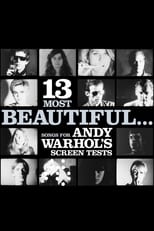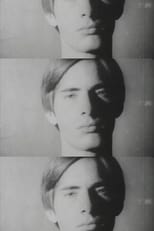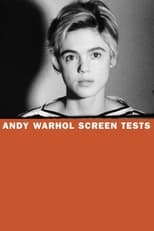

Richard Rheem
Richard Rheem is described in the first volume of the Warhol film catalogue raisonne as "a young man from a prominent California family" who met Andy Warhol at a party given by his uncle Bob Rheem and the artist/poet Liam O'Gallagher to celebrate the opening of the E.P.I. Warhol asked Rheem if he'd like to be in movies. After Warhol returned to New York, Rheem wrote him some letters and spoke to him on the telephone. Two letters from Rheem have been found in Andy Warhol's Time Capsule 79 - one dated July 27, 1966 and another dated September 7, 1966. He arrived in New York around the beginning of October 1966 and a romance with Warhol ensued, with Rheem giving Warhol's address as his own (1342 Lexington Avenue) on a talent release dated November 7, 1966. Victor Bockris' biography of Warhol has them living together until the second week of December 1966. After they split up Rheem continued to write to Warhol on a friendly basis as letters from him have been found in Time Capsules 12, 19 and 10 from 1968 and 1969.
Movies for Richard Rheem...

Title: 13 Most Beautiful… Songs for Andy Warhol's Screen Tests
Character: Himself
Released: April 7, 2009
Type: Movie
Between 1964 and 1966, Andy Warhol shot nearly 500 Screen Tests, beautiful and revealing portraits of hundreds of different individuals, from Warhol superstars and celebrities to friends or anyone he thought had "star potential". All visitors to his studio, the Factory. Subjects were captured in stark relief by a strong keylight, and filmed by Warhol with his stationary 16mm Bolex camera on silent, black and white, 100-foot rolls of film. The resulting two-and-a-half-minute film reels were then screened in slow motion, resulting in a fascinating collection of four-minute masterpieces that startle and entrance, mesmerizing in the purest sense of the word. Songwriters Dean Wareham and Britta Phillips, formerly of the band Luna and currently recording as Dean & Britta, incorporated original compositions as well as cover songs to create new soundtracks for the 13 films.


Title: Paranoia
Released: November 8, 1966
Type: Movie
On the evening of November 8th, 1966, following the afternoon filming of The George Hamilton Story, a movie in which Warhol cast his mother Julia as an “aging peroxide movie star with a lot of husbands”, – “ We’re trying to bring back old people.” – he took his crew and a much larger cast to Kaleidoscope, fashion designer Tiger Morse’s boutique shop on Madison Avenue in New York City, to shoot his second unreleased film of the day. A nocturnal tale of downtown bulls in an uptown China shop, Paranoia is a portrait of the always captivating, always hilarious Morse as she converses with everyone in front of and behind the camera while genuinely attempting to keep the Superstars in the room from wreaking havoc on her uniquely curated curios.


Title: Since
Character: John Connally
Released: October 1, 1966
Type: Movie
Andy Warhol's experimental reconstruction of the assassination of the President of the United States, John F. Kennedy, which serves as his critical commentary on the way the media presented the tragic event.


Title: Mrs. Warhol
Released: January 1, 1966
Type: Movie
Andy Warhol’s mother (Julia Warhola) is supposed to be pretending that she is a former Mack Sennett bathing beauty with 25 former husbands; Richard Rheem plays her current husband. Mostly, however, she appears as herself, ironing Andy’s underwear and Richard’s shirt, cooking eggs, and talking.


Title: Screen Test: Richard Rheem
Character: Himself
Released: January 1, 1966
Type: Movie
Richard Rheem screen test by Andy Warhol.


Title: Andy Warhol Screen Tests
Character: Self
Released: November 28, 1965
Type: Movie
The films were made between 1964 and 1966 at Warhol's Factory studio in New York City. Subjects were captured in stark relief by a strong key light, and filmed by Warhol with his stationary 16mm Bolex camera on silent, black and white, 100-foot rolls of film at 24 frames per second. The resulting two-and-a-half-minute film reels were then screened in 'slow motion' at 16 frames per second.
